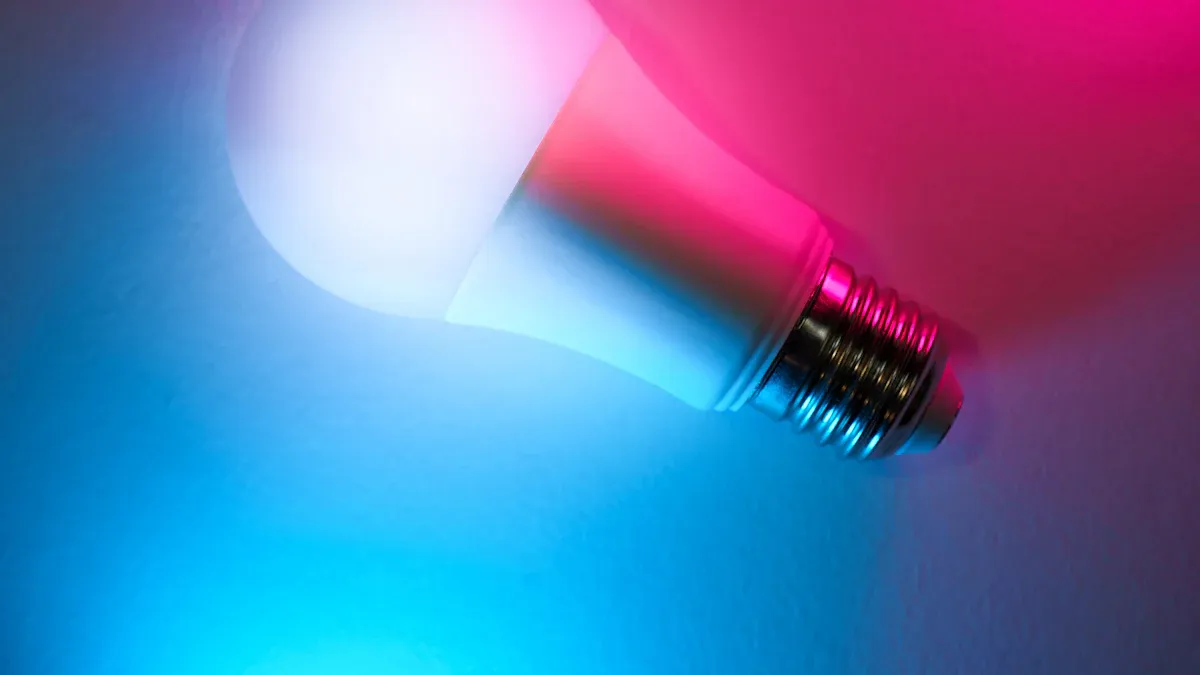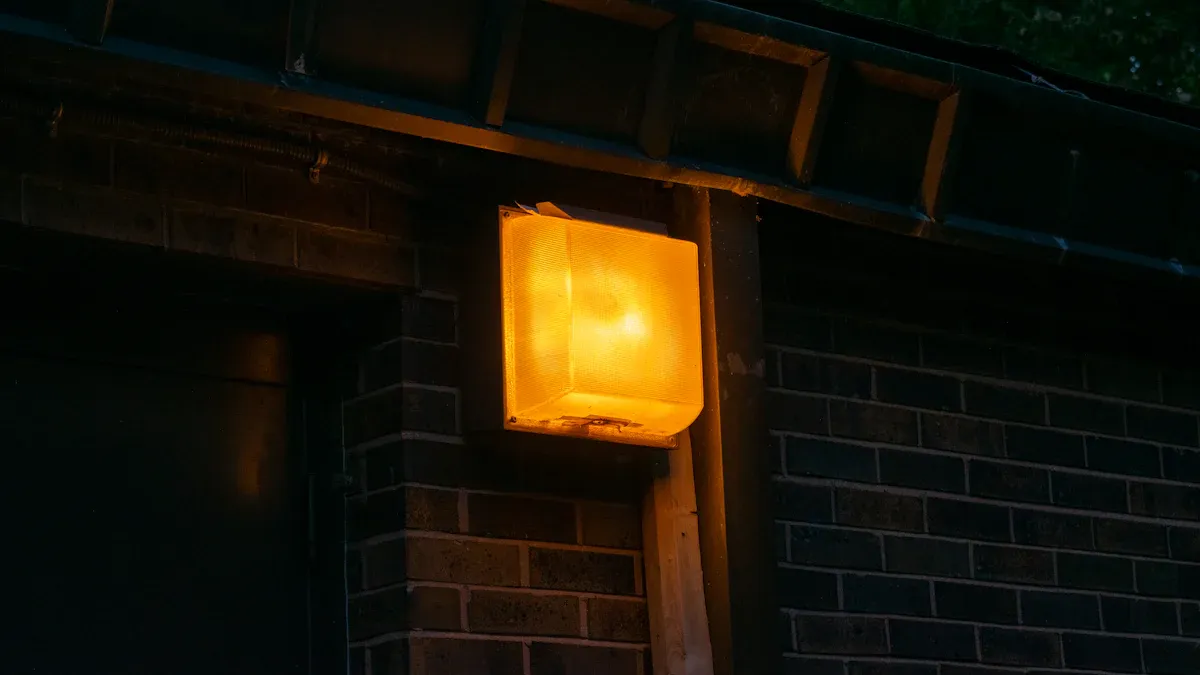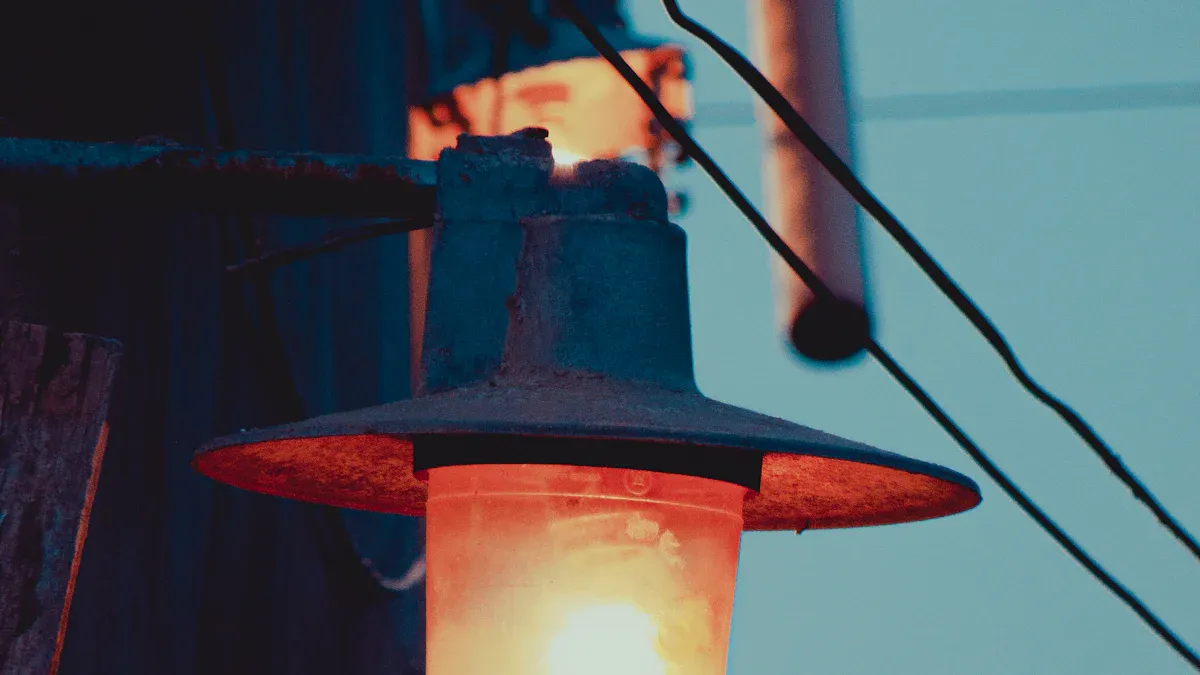Low Pressure Sodium Lights vs. LED Alternatives: Efficiency, Applications and Environmental Impact

When choosing lights, it’s important to know the differences. Low pressure sodium lights and LED lights are very different. They use energy differently and affect the environment in unique ways. For example, LED lights shine more evenly and reduce light pollution. This makes them better for animals than low pressure sodium lights. LEDs also use less energy and last longer, which helps the planet. Unlike low pressure sodium lights, LEDs don’t have harmful materials like mercury. This makes them safer to throw away. Whether for streets, solar light systems, or factories, picking the right product saves energy and helps the Earth.
Key Takeaways
LED lights use less power than low pressure sodium lights. This helps lower your electricity costs.
LEDs last a very long time, from 25,000 to over 200,000 hours. You won’t need to replace them often.
LEDs give off better light and show colors clearly. This makes them safer and easier to see with.
LEDs are better for the environment since they don’t have harmful stuff like mercury. This makes throwing them away simpler.
Using LEDs can greatly reduce carbon pollution. This helps keep the Earth healthy.
Efficiency of Low Pressure Sodium Lights vs. LED Lighting

Energy Use Comparison
Low pressure sodium lights and LEDs use energy differently. Sodium lights give off lots of light per watt, making them bright. But they use more electricity than modern LED lights. LEDs are built to save energy. They turn most electricity into light, wasting less power and cutting costs.
LEDs also focus light better. They shine exactly where needed, wasting less energy. This makes them great for streetlights, where focused light is important. Sodium lights spread light unevenly, wasting energy.
If saving energy matters, LEDs are the best choice. They use less power and shine brighter, making them good for homes and businesses.
Light Quality and Color Accuracy
LEDs make better light than sodium lights. Sodium lights only shine yellow, which makes colors look wrong. This can be a problem in places needing clear color vision.
LEDs come in many colors and show colors accurately. The Color Rendering Index (CRI) shows how well lights display colors. Sodium lights have low CRI, but LEDs can reach CRI 98, like daylight. This makes LEDs perfect for art galleries, stores, and studios needing true colors.
Lighting Type | |
|---|---|
Incandescent Bulbs | 95-100 |
Gas Discharge Lights | 60-90 |
LED Lights | <60 to >98 |
OLED Lights | <60 to 98+ |
LEDs stay bright over time. Sodium lights can flicker or dim as they age. LEDs keep shining strong, making them reliable for many uses.
Sodium lights: Bright but poor at showing colors, making objects look odd.
LEDs: Bright, accurate colors, and daylight-like light for better visibility.
Lifespan and Strength
How long lights last affects their usefulness. Sodium lights last about 18,000 hours, while high-pressure ones last up to 24,000 hours. LEDs last much longer, from 25,000 to over 200,000 hours. This means fewer replacements, saving money and time.
LEDs are tougher than sodium lights. They handle bad weather, heat, and shaking well. This makes them great for outdoor and factory use. Sodium lights are weaker and break more easily.
Choosing LEDs gives you long-lasting, strong lights. They save money, need less fixing, and help the environment.
Applications of Low Pressure Sodium Lights and LED Street Lights

Outdoor and Street Lighting
Streetlights help keep cities safe and visible at night. Low pressure sodium lights were often used because they save energy and shine brightly. But their yellow light makes colors look wrong, making streets seem dull and objects hard to see.
LED streetlights are a better option today. They give off bright, white light and show colors clearly. Cities are switching to LEDs to make streets safer and cut costs. In 2023, LEDs made up 79.7% of global lighting revenue. Roadway lighting alone earned 69% of this, showing the growing need for safer streets.
Aspect | Details |
|---|---|
Adoption Rates | LEDs made up 79.7% of global lighting revenue in 2023. |
Applications | Cities use LEDs to improve safety and lower costs. |
Roadway Segment Dominance | Roadway lighting earned 69% of total revenue in 2023. |
Industrial and Commercial Applications
Factories and businesses need lights that work well and save energy. Low pressure sodium lights use less power than old incandescent bulbs. But their yellow light makes it hard to see true colors, limiting their use in some places.
LEDs work better in these settings. They give steady, bright light that improves safety and visibility. In 2023, highways used 40% of LED lights, municipal roads used 30%, and courtyards used 15%. Municipal roads are growing fastest because of smart city projects. Demand for energy-saving lights is rising by 20% yearly, making LEDs the top choice for businesses.
Key Applications (2023):
Highways: 40%
Municipal Roads: 30%
Courtyard Lighting: 15%
Others: 15%
Fastest-Growing Application: Municipal Roads, boosted by smart city plans.
Market Growth: Energy-saving light demand grows 20% yearly.
Solar and Off-Grid Integration
Solar and off-grid lights need to be strong and energy-efficient. Low pressure sodium lights use little energy, but they don’t last long and their light quality is poor. This makes them less useful for modern systems.
LEDs are the best choice for solar and off-grid lighting. They use very little energy, last longer, and give better light. Solar-powered LED systems are becoming cheaper as solar panel prices drop and electricity costs rise. For example, Can & Güler (2019) showed how LEDs save money in off-grid systems. Shafik et al. (2020) also found that hybrid energy systems make resources more efficient.
Study | Findings |
|---|---|
Can & Güler (2019) | Solar-powered LED systems save money as PV costs drop. |
Shafik et al. (2020) | Hybrid energy systems use resources more efficiently. |
Rehman et al. (2020) | Hybrid systems improve energy use for homes. |
Using LEDs for solar and off-grid lighting gives you affordable and eco-friendly solutions.
Environmental Impact of Low Pressure Sodium Lights and LED Alternatives
Recyclability and Disposal Practices
LED lights are better for recycling and the environment. Unlike low pressure sodium lights, LEDs use materials like aluminum and plastic. These materials are easy to recycle, which helps reduce waste. This makes LEDs a smart choice for cities aiming to be eco-friendly.
Low pressure sodium lights are harder to dispose of safely. They have parts that need special care to avoid harming nature. LEDs, however, are simpler to recycle, making them a greener option.
Tip: Always follow local rules for recycling lights. This protects nature and supports sustainability efforts.
Hazardous Materials and Safety Concerns
Safety is important when choosing lights. Low pressure sodium lights have dangerous materials like mercury. If they break or aren’t thrown away properly, they can harm people and the planet.
LEDs don’t have mercury or other harmful substances. This makes them safer for homes, businesses, and cities. Rules like the RoHS Directive limit toxic materials in lights. LEDs meet these rules, making them a safer choice.
Directive | What It Does |
|---|---|
RoHS Directive | Limits harmful materials in electronic and electrical products. |
Exemptions | Allows some materials under strict conditions for certain technologies. |
LEDs also stay cooler, lowering the chance of burns or fires. They don’t give off UV or infrared rays, which helps reduce light pollution and keeps wildlife safe.
Sustainability and Carbon Footprint
Switching to LEDs saves energy and cuts carbon emissions. For example, a 120W LED light is as bright as a 250W sodium light but uses less power.
If a city with 20,000 streetlights switches to LEDs, it can cut 5,200 tons of carbon emissions each year. This helps the planet and saves money on electricity.
Why LEDs Are Better for the Planet:
Use less energy, cutting greenhouse gases.
Recyclable materials reduce waste.
Less light pollution helps animals and nature.
Choosing LEDs helps create a greener future. They last longer, save energy, and are better for the environment.
Note: Using LEDs isn’t just about saving energy. It’s about protecting the planet and building a safer, greener world.
Comparing low pressure sodium lights to LEDs shows big differences. LEDs save energy, last longer, and use less power. They give better light, making them great for streetlights, factories, and solar systems. Unlike sodium lights, LEDs don’t have harmful materials, so they’re safer for nature.
Switching to LEDs saves energy and money over time. For example, Los Angeles used connected LED streetlights. These cut energy use by 63% and saved over 1,200 pounds of CO₂ per light each year. LEDs also last longer, which means less trash and fewer resources used.
If you want to save money and help the Earth, pick LEDs. They help cities, businesses, and homes use less energy and stay eco-friendly.
FAQ
Why are LEDs better at saving energy than sodium lights?
LEDs turn most electricity into light, wasting little as heat. Sodium lights lose more energy during use. LEDs save power and lower electricity costs.
Are LEDs better for the planet than sodium lights?
Yes, LEDs are safer because they don’t have harmful mercury. They’re also easier to recycle. Sodium lights need special care to avoid hurting nature.
Can LEDs replace sodium lights everywhere?
Yes, LEDs can replace sodium lights in most places. They work well for streets, factories, and solar systems. Their bright light improves safety. But sodium lights may still be used for specific needs.
How long do LEDs last compared to sodium lights?
LEDs last much longer than sodium lights. Sodium lights work up to 24,000 hours. LEDs can shine for 25,000 to over 200,000 hours. This saves money and reduces replacements.
Do LEDs help reduce light pollution?
Yes, LEDs cut light pollution by focusing light where it’s needed. Sodium lights scatter light everywhere. LEDs reduce glare and protect animals by keeping skies darker.
See Also
Comparing LED Streetlights And Traditional Lights For Efficiency
Choosing Industrial LED Bulbs: Applications And Energy Efficiency
Benefits Of LED Street Bulbs: Lifespan And Efficiency Insights
Best Energy-Efficient LED Choices For Commercial Track Lighting
Exploring GE LED Bulbs: Features, Benefits, And Selection Guide

